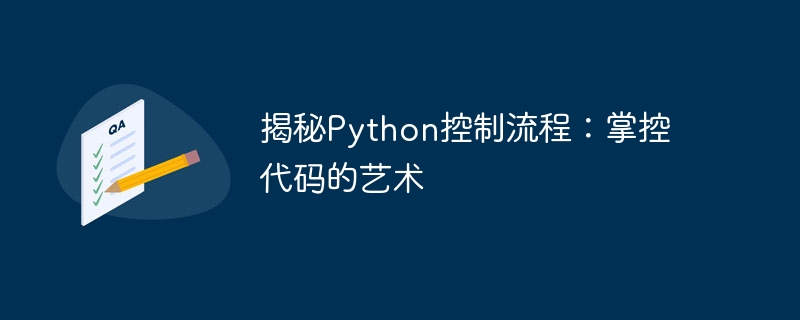
Conditional statements: Execute code based on conditions
-
if statement: is used to execute a block of code based on given conditions. Other cases can be handled using elif and else clauses.
-
while loop: As long as the condition is true, the code block is executed repeatedly.
-
for loop: Iterates through each element in the sequence and executes the code block on each iteration.
Branch statement: non-linear code execution
-
break statement: Exit the loop or switch statement immediately.
-
continue statement: Skip the remaining code in the loop and continue to the next iteration.
-
return statement: Return a value from the function and exit the function immediately.
-
pass statement: is used as a placeholder to indicate that this code block will not perform any operations.
Error handling: handle exceptions gracefully
-
try-except block: Wrap code that may throw exceptions in a try block and use an except block to handle exceptions.
-
finally block: Whether an exception occurs or not, it will be executed after the try-except block is executed.
-
raise statement: Manually raise exceptions to abort code execution at the appropriate time.
Advanced control flow: improve code readability
-
List comprehension: Apply operations to sequences and create new sequences using concise syntax.
-
Generator expression: Generate the sequence step by step instead of creating the entire sequence at once, thus saving memory.
-
Lambda function: Define anonymous functions that can be used to simplify code.
Best Practice: Writing Efficient and Maintainable Control Processes
-
Use appropriate control flow: Select the control flow structure that best suits the specific task.
-
Keep code blocks short: Keep code blocks to a manageable size to improve readability.
-
Avoid nesting too deeply:
- Use exception handling: Handle error conditions gracefully and provide useful error messages.
- Test your code: Write test use cases to verify that your control flow logic works as expected.
Mastering
python Control flow is critical to writing robust, performant, and maintainable code. By understanding and applying these mechanisms, developers can create clear, efficient applications and effectively manage code execution flow.
The above is the detailed content of Demystifying Python Control Flow: The Art of Controlling Code. For more information, please follow other related articles on the PHP Chinese website!






